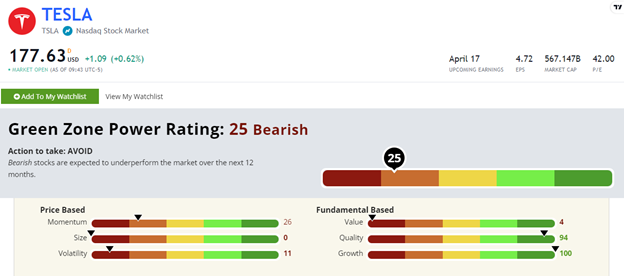In my trade, it’s practically a death sentence.
An affliction that creeps up insidiously…
Then — before you even realize what’s happening — it’s poisoned everything you’re doing.
You’ve probably heard of it too.
It’s called “analysis paralysis,” and it can be a nightmare for traders and investors.
After all, there are more than 6,000 tradable securities on the market. And there are more options, bonds, cryptocurrencies and niche investments than I could list out here.
We have so many opportunities to choose from these days, and as a result, it’s easy to get stuck in a loop of endless research and inaction.
Unfortunately, technology is only making this situation worse, too.
According to a recent study from Pew Research, the average American spends seven hours per day staring at screens. Seven hours! That’s nearly half our waking lives.
We’re taking in massive quantities of data, too.
Another study from USC Annenberg found that our minds are processing the equivalent of 174 newspapers worth of information every day.
That’s FIVE TIMES the amount of daily information you took in back in 1986.
Kind of like drinking from a fire hose!
Most of us don’t realize how detrimental this kind of overexposure can be. But it’s something I’m acutely aware of…
I’ve spent my entire career focusing on what’s called “factor investing,” developing specialized investing systems based on extensive research and analysis.
It’s the kind of investing that requires me to absorb as much information as possible — while still processing all that data into a profitable, repeatable strategy.
We always have the temptation to soak up more data, to consider more opportunities.
But at the end of the day, it’s critical to stay focused on what really matters in investing: the profits.
Here’s how I do that…
6 Simple Factors for Investing Success
When I’m looking for my next investment, I like to keep things simple.
That means I don’t fret over external factors like this year’s upcoming presidential election, whether bitcoin is trending or which blockbuster is top at the box office.
Instead, I focus on just six key factors:
- Momentum.
- Size.
- Volatility.
- Value.
- Quality.
- Growth.
That’s it.
I explained each of these factors at length in an interview with my managing editor, Chad Stone, which you can find here.
These six factors reflect both the technical and fundamental aspects of a company, giving us a “no-BS” snapshot of a stock’s overall health and prospects at any given moment.
My Green Zone Power Ratings system then assigns a numerical score for each of these factors (from 0 to 100). The resulting scores are then averaged together to give each stock a single Green Zone Power Rating.
The resulting rating falls into one of five categories:
- Strong Bullish (81-100).
- Bullish (61-80).
- Neutral (41-60).
- Bearish (21-40).
- High-Risk (0-20).
We’ve also included an “action to take” with each stock depending on where it lands on the spectrum. To learn more about these rankings and what each action means, check out the table below:

I know, I said my approach was “simple”…
And here I am, breaking out the spreadsheets!
I’m a bit of a geek for data and systems, so I hope you’ll bear with me.
Because the end result is my Green Zone Power Ratings system — available to use for free right here on our website.
Just click on the magnifying glass in the corner of your screen (or look for the search bar) and type in a stock’s ticker to see its rating. You’ll shortcut hours of investment research.
For example, here’s what Tesla Inc.’s (Nasdaq: TSLA) rating looks like right now:
The EV automaker rates well on Quality and Growth, because it brings in revenue and has a healthy balance sheet.
Meanwhile, its stratospheric price-to-earnings ratio is reflected in its low Value rating…
Its massive, half-trillion-dollar market cap scores it a zero on Size.
Due to these factors, it rates at just 25 out of 100 and falls into the “Bearish” subset.
As you can see from the color scheme, the system gives you an even simpler “green light”/ “red light” indicator to show whether a stock is worth investing in or not.
You might believe Tesla is a great business. It might have a bright future. It might defy all odds and outperform over the next 12 months.
But based on its Green Zone Power Rating, now is probably not a good time to buy shares.
Finding out why only took us about five seconds.
We didn’t have to parse through dozens of media puff pieces, listen to Elon Musk’s countless interviews or (heaven forbid) suffer through his appearance on the Joe Rogan podcast.
Most importantly, this same “simplified” approach works with every stock out there…
Stay the Course: Consistent Execution for Consistent Results
Legendary investor Sir John Templeton once said: “The four most dangerous words in investing are ‘it’s different this time.’”
In other words — investors are often eager to make exceptions for a specific opportunity…
They’ll ride out Tesla’s vicious ups and downs because they believe in Musk’s vision.
They’ll hold onto crashing cryptocurrencies with “diamond hands” because they believe in sticking it to the “man.”
Or they’ll dive into a risky trade, promising themselves the fundamentals have somehow changed.
But when it comes to success in investing, consistency is crucial.
It’s vital to find a system that works well and stick to your guns — repeating success over and over, year in and year out.
Based on an extensive study going back to 2001, my team found that using Green Zone Power Ratings to guide your investing would help you beat the market 3-to-1.
If you stick with the highest-rated stocks exclusively, then you’re beating the market 15-to-1!
So instead of going “down the rabbit hole” with clickbait financial media, take the next ten minutes to review the Green Zone Power Ratings system on some of your biggest stock holdings. Click here to do so now.
You might be surprised by what you see.
And if you discover something unexpected in your portfolio, I’d love to hear about it!
Shoot me a quick email to Feedback@MoneyandMarkets.com and tell me which stock surprised you.
To good profits,

Adam O’Dell
Chief Investment Strategist





